使用批量分析
我们现在要学习如何设置一个批处理进程来分析多个细胞盘中的数据。热图的批处理功能和FCS Express中其它类型绘图的批处理功能相同。要更多地了解如何进行批处理,我们建议用户在开始本节之前阅读一下“批处理”教程。
我们会使用HighContentBatch.fey版面、HighContent96wellData.dns数据文件以及HighContentNewPlate.dns数据文件(.dns是一个文件后缀,这类文件是在FCS Express中创建的,允许对数据进行特别压缩)。
| 1. | 打开FCS Express Sample Data(FCS样本数据)目录下的HighContentBatch.fey版面。 |
这个文件保存为非链接文件,我们必须在开始添加批操作之前把我们的细胞盘数据导入到数据列表中。
| 2. | 请选择Data(数据)→Organize Data Sets(组织数据集)→Data List(数据列表)命令(图T9.2)。 |
| 3. | 点击 |
| 4. | 从Files of type:(文件类型:)下拉列表中选择DNS data Stream files (*.dns)(图T18.17)。 |
| 5. | 选择HighContent96wellData.dns和HighContentNewPlate.dns文件,然后点击Open(打开)(图T18.31a)。 |
注意:通过按下Ctrl键+点击的方式,您可以选择多个文件。
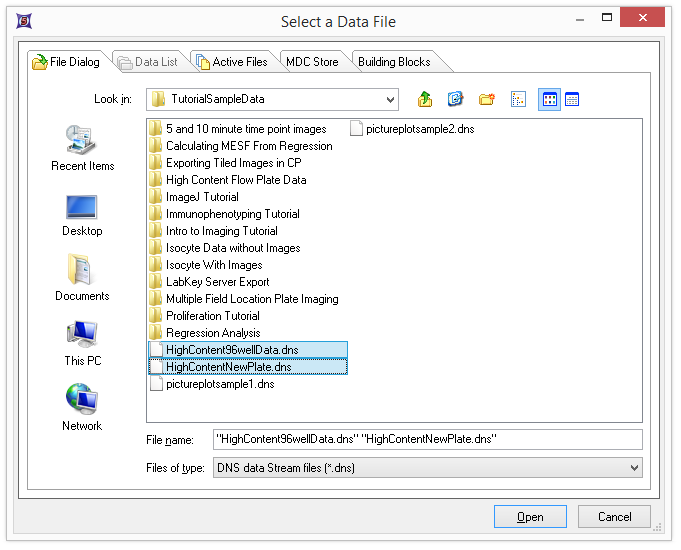
Figure T18.31a - Multiple file selection in the Select a Data File window
| 6. | 选择Data(数据)→Change Data on All Objects(修改所有对象上的数据)→Select(选中)命令。此时,Select a Data File(选择一数据文件)窗口将出现。 |
| 7. | 点击Data List(数据列表)标签。 |
| 8. | 选择HighContent96wellData.dns,然后点击Open(打开)。 |
这时绘图看起来应该如图T18.31b所示。文件中有三种热图数据的显示方式以及一个显示热图中所有细胞孔统计数据的表格。我们现在要定义批操作来在数据列表上导出两个细胞盘文件。

Figure T18.31b - High Content Batch Layout with Data
| 9. | 选择Batch(批)→Batch Processing(批处理)→Batch Actions(批操作)命令(图T9.6)。此时,Batch Actions(批操作)窗口将出现。 |
| 10. | 选择Add Action(添加操作)区域(左边)中的Save To PDF(保存至PDF)。此时,Create Export to PDF Action(创建导出至PDF操作)窗口将出现(图T18.32a)。 |
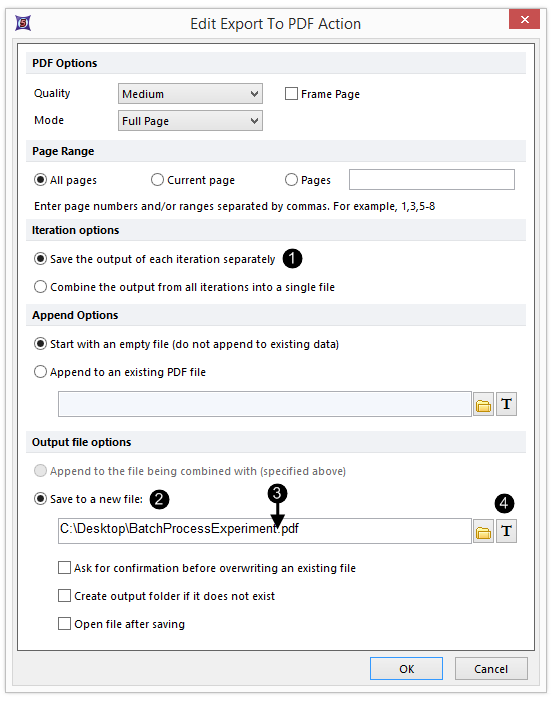
FIgure T18.32a - The Create Export to PDF Action window
| 11. | 点击Save the output of each iteration separately(分别保存每个循环的输出)单选按钮,位于Iteration options(循环选项)之下( |
| 12. | 请在Save to a new file(保存到新文件)字段中为pdf文件选择一个名称和文件夹( |
| 13. | 请在文件名之后、后缀(.pdf)之前直接点击( |
| 14. | 点击 |
| 15. | 选择Batch Processing(批处理)→Current iteration(当前循环),位于Insert a Token(插入一个标记)对话框(图T18.32b)。 |
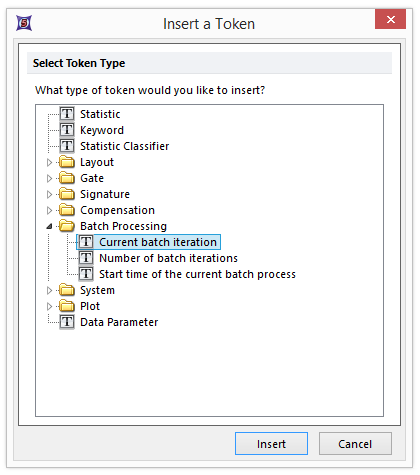
Figure T18.32b - The insert Token dialog
| 11. | 点击Insert(插入)。 |
此时,Create Export to PDF Action(创建导出至PDF操作)对话框看上去应如图T18.32c所示。
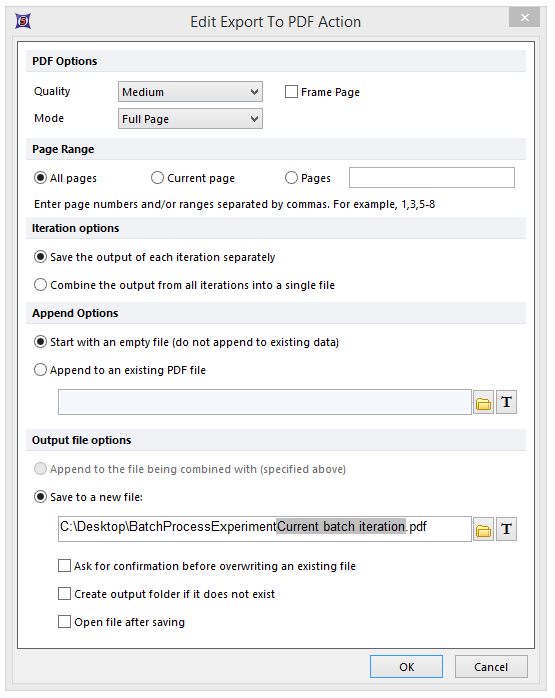
Figure T18.32c - Create Export To PDF Action Dialog
| 17. | 点击OK。 |
| 18. | 选择Add Action(添加操作)区域中的Save to PowerPoint(保存至PowerPoint文稿) |
| 19. | 点击Iteration options(循环选项)下的Combine the output from all iterations into a single file(把所有循环的输出合并到一个文件中)单选按钮。 |
| 20. | 请在Save to a new file(保存到新文件)字段选择一个文件名和保存位置。 |
此时,Create Export To Powerpoint Action(创建导出到Powerpoint操作)看起来应如图T18.33所示。

Figure T18.33 Create Export To Powerpoint Action Dialog
| 21. | 点击OK。 |
此时,Batch Actions(批操作)窗口看起来如图T18.34所示。运行这个批处理将创建一个新的PDF文件,PDF中每页对应批处理中的一个文件,该批处理还会为每个文件创建一个PowerPoint结果文件。
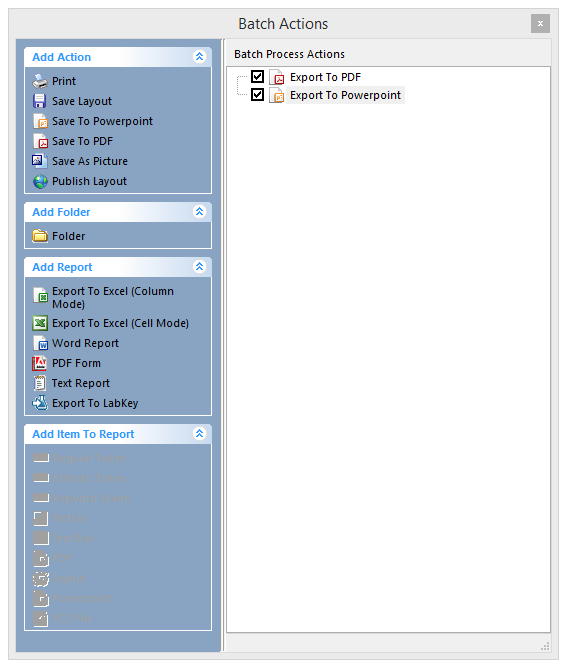
Figure T18.34 Batch Actions Window
| 22. | 选择Batch(批处理)→Batch Processing(批处理)→Run(运行)命令。 |
批操作会逐次处理数据列表中的每一个文件,然后导出我们之前添加的各项操作。因为数据列表中只有两个文件,因此:
- 两个PDF文件中分别包含一个循环(因为我们选择了Save the output of each iteration separately(分别保存每个循环的输出))。文件名包含一个公用部分("BatchProcessExperiment")和一个可变部分(标记涉及的循环次数)。后者可让您对批处理生成的不同PDF文件级进行区分。
- 一Power Point文件包含所有的循环(因为我们选择了Combine the output from all iterations into a single file(把所有循环的输出合并到一个文件中))。因为文件是独一无二的,因此不需要任何标记。
在最后一个练习中,我们将使用Z-轴功能。
